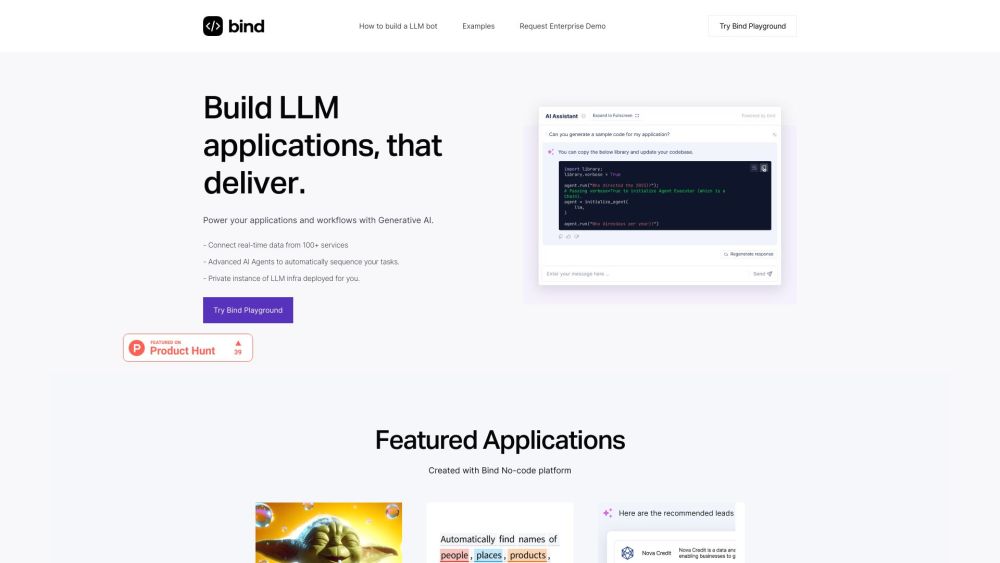Generative AI: Transforming Enterprise Technology Spending for the Future
Generative AI marks a significant transformation in technology that will drive substantial changes in enterprise spending over the next decade and beyond. While the rapid advancements in generative AI may seem sudden, the journey to fully integrate this technology into the enterprise technology stack is a gradual yet deliberate process.
Initially, companies are directing investments toward the infrastructure layer, laying the groundwork for enhanced power and performance. This is evident in the significant capital flowing into companies like Nvidia and GPU aggregators, signaling that the process is already underway. As adoption grows and funding shifts upward, the development focus will increasingly center on innovative experiences and products that will redefine successive layers of the technology stack.
Currently, we are beginning to see how this transformation will manifest at the application layer, with early indications pointing to profound disruptions. Even before the arrival of generative AI, enterprise applications had already been evolving to provide more user-friendly, consumer-like experiences. This evolution was characterized by improved user interfaces and the incorporation of interactive features that engage users and streamline workflows. Consequently, there has been a move from traditional "system of record" applications like Salesforce and Workday to more dynamic "system of engagement" applications such as Slack and Notion.
Collaboration is a hallmark of this new breed of enterprise tools, boasting features like multiplayer modes, annotation capabilities, version history, and metadata. These applications also harness consumer-driven viral elements to boost adoption and facilitate seamless content sharing within and across organizations. The core record retains its value within these engagement systems, serving as the foundation for the ever-increasing volume of information generated.
As generative AI continues to influence the next generation of application products, we can anticipate further evolution. The initial phase of product development has produced tools reminiscent of ChatGPT integrators, offering quick but short-lived value. So far, various generative AI products have experienced rapid initial growth, yet they often face high churn rates due to a lack of cohesive workflow or additional functionalities. Typically, these tools result in single-use outputs that fail to integrate into users’ daily operations, relying instead on readily available generative models in the market.
The upcoming wave of generative AI applications, now beginning to take form, will capitalize on integrating structured data from system-of-record applications with unstructured data from system-of-engagement applications. Developers focusing on this integration possess greater potential to create sustainable companies than their first-wave counterparts, provided they can "own" the layer above these existing systems. This will be no small feat, as established players like Salesforce are already racing to implement generative AI to fortify their market position.
This stage leads us to the third wave, where new entrants will establish their own, secure "system of intelligence" layer. Startups will initially introduce innovative product offerings that provide value by leveraging existing system-of-record and system-of-engagement capabilities. Once they demonstrate a viable use case, these startups will develop workflows that can function independently as genuine enterprise applications.
This evolution won't necessarily replace existing interactive or database layers; instead, it will generate new structured and unstructured datasets. Generative models will utilize these new datasets to enhance the user experience, creating a novel class of "super datasets."
A primary focus for these products must be on seamless integrations that can ingest, clean, and categorize data effectively. For example, to build an advanced customer support system, it's crucial to do more than simply pull in existing support tickets. A high-quality product should also include bug tracking, product documentation, internal communications, and much more. It will intelligently extract relevant information, categorize it, and evaluate it to generate actionable insights. A robust feedback loop will allow continuous improvement based on both individual organization usage and cross-organization experiences.
When a product successfully achieves this integration, transitioning to a competing offering becomes exceedingly difficult—cleaned, weighted data holds immense value, and replicating such quality with a new product would require significant time and effort.
At this stage, the intelligence lies not only in the product or model itself but also in the intricate hierarchy, labeling, and weighting of data. Insights generated will arrive in minutes rather than days, prioritizing actionable decisions rather than mere data synthesis. These will be the hallmark of true system-of-intelligence products powered by generative AI, which will exhibit key characteristics:
- Deep integration with organizational workflows, capturing both newly generated structured and unstructured data.
- Sophistication in data categorization through established hierarchies, labels, and weights.
- Creation of data feedback loops within and across organizations to continuously enhance the user experience.
A critical question I often pose to clients is, “How does a new product compare to the other tools you currently utilize?” Generally, the system-of-record product ranks highest in importance, followed by system-of-engagement tools, while any additional tools typically fall lower on the list. The least essential tool is usually the first to be cut during budget constraints, emphasizing the need for emerging system-of-intelligence products to deliver lasting value for survival. They will also face stiff competition from incumbents integrating generative AI-enabled intelligence into their offerings. The new generation of system-of-intelligence must align their products with high-value workflows, collaboration, and the advent of super datasets to thrive.
The acceleration of AI innovation over the last year has been remarkable, with open-source models proliferating and proprietary models rapidly evolving. It is now up to entrepreneurs to develop lasting system-of-intelligence products on this dynamic landscape—when executed successfully, the impact on enterprises could be revolutionary.




